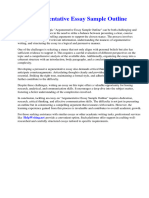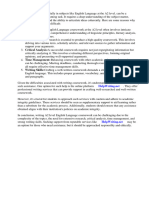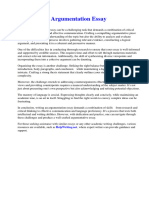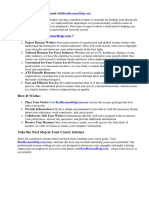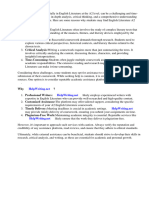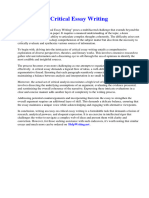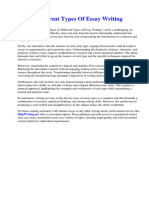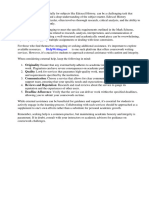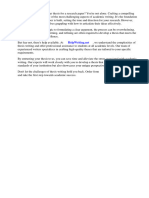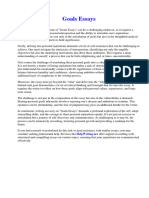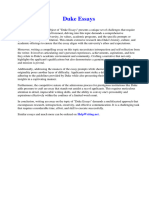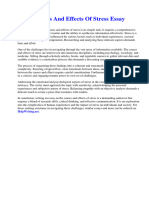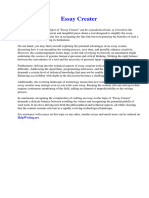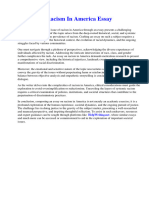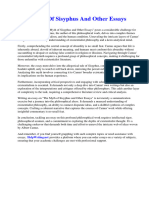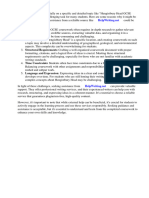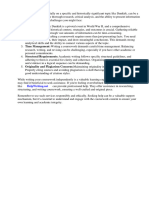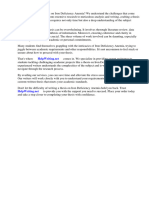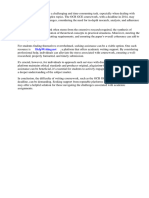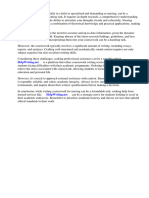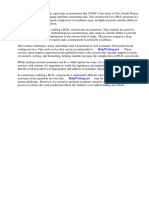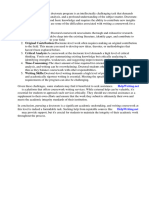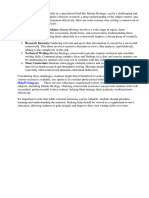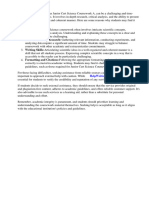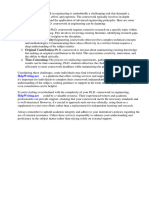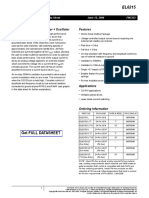Writing a coursework, especially on a specific and historical topic like Dunkirk Sources, can be a
challenging and time-consuming task. It requires extensive research, critical analysis, and the ability
to synthesize information from various sources. Here are some reasons why writing coursework on
Dunkirk Sources might be difficult:
1. Extensive Research: Dunkirk was a significant event during World War II, and finding
credible and relevant sources can be a daunting task. Navigating through historical
documents, articles, and books to gather comprehensive and accurate information can be
time-consuming.
2. Critical Analysis:Interpreting and analyzing sources critically is crucial for a coursework
project. You need to evaluate the reliability, bias, and relevance of each source to construct a
well-supported argument.
3. Historical Context: Understanding the historical context of Dunkirk and its impact requires
a deep knowledge of World War II. Grasping the political, social, and military aspects of the
time is essential for providing a nuanced and informed perspective.
4. Organizing Information: Managing a vast amount of information and organizing it
coherently in a structured format is a skill that not everyone possesses. Creating a logical
flow and connecting different aspects of the Dunkirk evacuation can be challenging.
5. Time Constraints: Coursework often comes with tight deadlines, and researching and
writing on a complex topic may take a considerable amount of time. Balancing coursework
with other academic and personal commitments can be overwhelming.
Given these challenges, some students may find it beneficial to seek assistance. While ordering from
online services like ⇒ HelpWriting.net ⇔ may seem tempting, it's important to consider the ethical
implications of such actions. Using external help for coursework raises concerns about academic
integrity and the development of essential skills.
Instead of outsourcing the work, consider the following tips to make the process more manageable:
1. Start Early: Begin your research and writing well in advance to avoid last-minute stress.
2. Use Academic Resources: Utilize library databases, academic journals, and reputable books
for your research.
3. Seek Guidance: Consult with your instructor or peers for feedback and guidance during the
process.
4. Develop Critical Thinking Skills: Enhance your ability to critically evaluate sources and
form well-supported arguments.
5. Time Management: Break down the coursework into smaller tasks and allocate time wisely
to avoid feeling overwhelmed.
Remember, the purpose of coursework is not just to earn a grade but to enhance your understanding
of the subject and develop valuable academic skills.
�Churchill omits any factual detail for instance 68,111 troops were killed, wounded and taken prisoner
making the source unreliable. Write a review Update existing review Submit review Cancel It's good
to leave some feedback. This source contradicts my knowledge; therefore making this source is
unreliable. Bargain price. ?10.00 Bundle WWII Bundle A series of resources that could be used to
teach Year 9 about WWII. ?4.00 Reviews Select overall rating (no rating) Your rating is required to
reflect your happiness. Bundle The Cold War 9 HOURS - A mini unit of 9 x 1 hour lessons on the
Cold War. Includes. I know from reading other sources that in many places positions were being
held by very small numbers of men. Some sources agree with the question that the evacuation from
Dunkirk in World War Two was a great disaster for Britain while other sources disagree and say that
it was a success. From the painting we can see bombings in the background, pleasure boats on the
beaches and large number of troops on the beaches. I do not feel that this source is reliable because
this could of been a section of the beach where the photographer made look worse than it actually
was but it is reliable in some ways because it is a photograph that I feel has not been edited. Write a
review Update existing review Submit review Cancel It's good to leave some feedback. The photo
lead me to believe that the evacuation was deliverance with no real disaster being inflicted apart
from the loss of heavy artillery, as all the soldiers seem to be armed with just a rifle, all of the troops
seem to be alive with no great loss of life and there is calmness among the lines of soldiers waiting
for a small vessel led them to safety. Reviews Select overall rating (no rating) Your rating is required
to reflect your happiness. I have also included two free lessons in the bundle to give an idea of what
is being offered. ?24.79 Reviews Select overall rating (no rating) Your rating is required to reflect
your happiness. The New York Times of 1 st June 1940 wrote, “so long as the English tongue
survives the word Dunkirk will be spoken in reverence.” And the phrase Dunkirk spirit has become
synonymous with refusing to give up in the time of crisis. It was written to inform British people of
the circumstances. If we relate our findings back to the question we can see that deliverance could
come from the fact that the boats pictured waiting to take the troops to safety whereas from the
disaster point of view the enemy fire, the smoke form the damage caused and the lack of heavy
artillery present would add weight to the view that it was indeed a disaster. How far we can believe
this photograph is questionable, as all the other sources seem to mention that the troops on the beach
were under attack form enemy fire. If you are happy with your resource, please leave us a review.
See other similar resources ?1.00 (no rating) 0 reviews BUY NOW Save for later Not quite what you
were looking for. Created by an experienced HoD in a UK secondary school. He was also writing in
hindsight and he knew what happened at the end as well, which may have changed the way he
thought during the time. This is an account about tired, ragged men who are unhappy. Bundle WWII
and Post War SOW - Scheme - 14 Lessons 1 - Holocaust. It shows that the victory of Dunkirk
allowed British troops to take the first steps in the collapse of Hitler’s Nazi empire. This resource
hasn't been reviewed yet To ensure quality for our reviews, only customers who have purchased this
resource can review it Report this resource to let us know if it violates our terms and conditions. It
can be seen as a deliverance by the fact that the British and French survived which is a great feat on
it’s own, because seeing what predicament the British and French were in, it was likely they were
going to lose. I have created and used these lessons to challenge and engage students, but also to
show how much fun learning about this part of history really is. Between 27 May and 4 June, as the
German air force pounded the beaches, the Royal Navy evacuated men back to England. Bundle
World War 2 Bundle This bundle follows the Key Stage 3 National Curriculum - challenges for
Britain, Europe and the wider world, 1901 to the present day with a focus on the conflicts of the
Second World War. I am going to investigate eight sources four of which back up the theory of a
miracle and four of which back up the theory that it was a disaster.
�Get this resource as part of a bundle and save up to 30% A bundle is a package of resources grouped
together to teach a particular topic, or a series of lessons, in one place. So my conclusion is that it
was a miracle that they rebuilt themselves after this defeat, it was a miracle they got all there men out
of there alive, but it was the biggest disaster in the history of British war in the fact that they were
crushed and sent straight back from the powers of the German forces. This source is a form of
British propaganda because it is telling people from the United Kingdom that we are doing really
well at all. I think that although they were defeated it could have been much worse. Our customer
service team will review your report and will be in touch. ?1.00 (no rating) 0 reviews BUY NOW
Save for later ?1.00 (no rating) 0 reviews BUY NOW Save for later Last updated 26 July 2020 Share
this Share through email Share through twitter Share through linkedin Share through facebook Share
through pinterest Enabled Learning 4.95 12 reviews Not the right resource. In the middle of the
painting there is a sunken boat, which could have been sunk by the GAF, as we know the GAF
would be bombing the beaches. It shows a large amount of troops trailing in the sea and
overcrowded boats. So my conclusion is that it was a miracle that they rebuilt themselves after this
defeat, it was a miracle they got all there men out of there alive, but it was the biggest disaster in the
history of British war in the fact that they were crushed and sent straight back from the powers of
the German forces. This is insufficient on telling us on what the battle was like, because it is a piece
of propaganda. It shows a well improvised operation and I know from my own knowledge that
many civilians volunteers in all kinds of boats to rescue the troops. See other similar resources ?1.00
(no rating) 0 reviews BUY NOW Save for later Not quite what you were looking for. But on the
other side of the story there are many historians that believe this was not a miracle it was nothing but
that of a disaster. Source h is wartime propaganda a good piece at that, but it’s very untruthful,
source J is the soldiers letter that has been censored, and source K is a list of figures that are so
precise that it seems impossible to count down to each individual soldier. This source is useful as it
was written by a historian so it’s likely to be well-balanced in his views Also the facts and figures
given in the text match my own knowledge as I know that 7,000 men were moved on the first day,
which makes this source reliable. I am going to investigate eight sources four of which back up the
theory of a miracle and four of which back up the theory that it was a disaster. Churchill commented:
“Evacuations do not win wars,” showing that he knew the rout was a backwards step in terms of
defeating the Germans. This is a primary source and was taken from a boat manning the rescues
from the beaches of Dunkirk. Write a review Update existing review Submit review Cancel It's good
to leave some feedback. I do not feel that this source is reliable because this could of been a section
of the beach where the photographer made look worse than it actually was but it is reliable in some
ways because it is a photograph that I feel has not been edited. For example, I know from my
geographical knowledge of the area that the town of Dunkirk is not as close to the beaches as the
source seems to suggest. It gives is this the statistics of all the variables at Dunkirk, including ships
sunk, troops killed and tanks blown up. Write a review Update existing review Submit review
Cancel It's good to leave some feedback. In my opinion it was a bit of both, deliverance and disaster.
Plus you can’t really even trust the figures given because the British government drew them up, so
they most likely exaggerated them to show off to the public and keep British morale up. Write a
review Update existing review Submit review Cancel It's good to leave some feedback. This source
shows us visually weirder British troops got stuck and rescue from it shows us how the German
troops were closing in and how close they got to our British troops. It is reliable from the Italian
point of view but biased from the British point of view. The Indications given out from the
commanders and the general is that the force was a Shambles. The second picture shows shipwrecks
again abandoned equipment and also dead British soldiers. Source F shows the soldiers warding off
German fighter planes.
�This suggests that the military command had given up any hope of regaining French land, instead
submitting to an all-out retreat. For example, by the 31 st May there was only a canal separating
Dunkirk from the Germans. If rifles were left behind you get the feeling anything heavier or bigger
was left behind too. It also shows that the German aircraft were mercilessly attacking the Allied
troops on the beaches, who were powerless to stop the strafing. It shows us the all the British
military belongings that were left on the beach. But on the other side of the story there are many
historians that believe this was not a miracle it was nothing but that of a disaster. Yes it is a reliable
source because it is written for a schoolbook to learn about the topic. Also from my own knowledge
I know that the 27 th May was a bad day for the British as they were heavily bombed by the
Luftwaffe. This source is quite reliable as its primary evidence and the writer is British- however at
the same time he gives a negative account- suggesting he is not bias towards his country. He portrays
images of troops crouching in pits and naval officers turning on their troops. Our customer service
team will review your report and will be in touch. ?2.00 (no rating) 0 reviews BUY NOW Save for
later ?2.00 (no rating) 0 reviews BUY NOW Save for later Last updated 16 February 2020 Share this
Share through email Share through twitter Share through linkedin Share through facebook Share
through pinterest JohnCahill 1.67 3 reviews Not the right resource. Churchill commented:
“Evacuations do not win wars,” showing that he knew the rout was a backwards step in terms of
defeating the Germans. The German forces were much more powerful than Britain and their allies
expected. This source would only scare the people of Britain. See other similar resources ?3.00 (no
rating) 0 reviews BUY NOW Save for later Not quite what you were looking for. This source is a
form of British propaganda because it is telling people from the United Kingdom that we are doing
really well at all. This source was publicized to give the nation hope and inspiration. Write a review
Update existing review Submit review Cancel It's good to leave some feedback. It was published just
after the evacuation and therefor it is a primary source. The fact that there are these two aspects of
the event is the reason why the quote appears to be self-contradictory. Still none of the sources apart
from source I tell us about the eastern mole, and the1-mile jetty that helped so many men escape. I
feel that the fact that Britain managed to evacuate all those people is a miracle in its self, although I
do feel there was a bit of luck in the fact that Hitler chose bot to attack, even when the British were
like sitting ducks. They could have lost many more men, ships, tanks and other artilleries. It is clear
from this, as from Source B, that the military’s primary objective was to get out of France rather than
to fight their way back into it. This man has written a lot of extracts for school text books, so I feel it
would be safe to say that this source is reliable, but it would be good to know where this mans
sympathies lie. Altogether none of these sources are sufficient enough o support the interpretation,
they are just pictures, so anything could have happened after they were taken or painted, they just
don’t tell me enough. The quote I have mentioned is quite scary and shown total domination from
the axis forces. Dunkirk and The Battle of Britain - Why was Britain able to win the Battle. Our
customer service team will review your report and will be in touch. ?3.00 (no rating) 0 reviews BUY
NOW Save for later ?3.00 (no rating) 0 reviews BUY NOW Save for later Last updated 1 August
2023 Share this Share through email Share through twitter Share through linkedin Share through
facebook Share through pinterest Thehistoryshop1's Shop 2.91 12 reviews Not the right resource. I
believe there is propaganda included as a way of the British Expeditionary Force gaining support in
means of more men signing up to fight for their country.
�See other similar resources ?3.00 (no rating) 0 reviews BUY NOW Save for later Not quite what you
were looking for. Source D’s a painting showing the soldiers being rescued, it shows their stairing for
survival. The source is useful to our enquiry because this shows that much equipment was left behind
the evacuation. If it were a diary entry, I would think it was written at the time. It is very detailed
which makes me come to this assumption. How useful are sources A, B and C in understanding what
the battle of Dunki. The source is useful as its primary, first hand evidence, but the photo’s show
only one part of the beach and we have to ask can a photo really show the full story. Any of these
sources by themselves don’t give me enough evidence to support the interpretation. Also from my
own knowledge I know that on the first day of the evacuation only 7,669 troops were evacuated
whereas the other days were much more successful. These two images illustrate the equipment
abandoned on the beaches. We must remember also that Atkins wants to make his book more
dramatic in order to sell better. The air force was reduced considerably, with 474 planes lost very few
planes has gained ground on allies advantages. This resource hasn't been reviewed yet To ensure
quality for our reviews, only customers who have purchased this resource can review it Report this
resource to let us know if it violates our terms and conditions. It is clear from this, as from Source B,
that the military’s primary objective was to get out of France rather than to fight their way back into
it. Now, source E shows the soldiers on the beach waiting to be evacuated. Nevertheless, this does
not necessarily mean that his depiction is exactly true. He was a Brigadier and so was in charge of
many soldiers, so he must have some authority. I also know from my own knowledge that small
boats occupied masses of troops well beyond their limits and as a result became extremely
overcrowded and in some cases caused boats to capsize making this source more useful. This proves
that Dunkirk was by no means an unequivocal success. This resource hasn't been reviewed yet To
ensure quality for our reviews, only customers who have purchased this resource can review it
Report this resource to let us know if it violates our terms and conditions. Many men abandoned
their rifles, which was a disheartening sight to other troops. The seaman comments on a RASC
sergeant who drove away German fighter planes single-handed with a gun. I shouldn't think that the
source is biased because it is written by a historian although we do not know what type of historian
he is. The source is fairly reliable as Churchill would have got all the first information first hand,
however this also means Churchill would only give information about the evacuation that would
boost-morale. I also believe that the ships would have been much further from the coast than shown,
due to the shallowness of the beach. In the first 12 lessons, students will learn and understand key
historical skills throughout such as continuity and change in the role and use of propaganda in World
War II, the causes and consequences of the policy of appeasement, breaking the Enigma Code or the
evacuation of children, the similarities and differences of life on the Home Front, the significance of
Winston Churchill and VE Day and interpretations about whether there really was a Blitz spirit. The
problem with this source is that it is a still life picture meaning, it’s just one second of. This account
is primary, first hand evidence so the German is speaking from personal experience producing a
useful source. The source is written by a historian David Knowles, writing to tell people about the
escape in Dunkirk for his book escape from catastrophe in 2002. This source is a form of British
propaganda because it is telling people from the United Kingdom that we are doing really well at all.
�Write a review Update existing review Submit review Cancel It's good to leave some feedback. This
source is secondary, with an objective account. At the end of my investigation I will come to my own
conclusion of whether it was a miracle or a disaster. See other similar resources ?0.00 (no rating) 0
reviews Download Save for later Not quite what you were looking for. However the source is
limited because this shows only one aspect and show the troops evacuating or what sort of ships
were used by the British to evacuate the troops. This bundle includes retrieval practice activities,
suggested teaching strategies and differentiated materials. From the painting we can see bombings in
the background, pleasure boats on the beaches and large number of troops on the beaches. Also
although the author is unknown it’s likely to be British due to the fact that the photos are taken on a
boat and its one sided therefore making the source bias which weakens the source’s reliability. Aided
by allied ships and a mixed fleet of little ships, from Dunkirk and from beaches stretching 10 miles
eastwards from the entrance to Dunkirk harbor. In my opinion it was a bit of both, deliverance and
disaster. It is heroic, being evacuated under fire, thus creating a particular image. I do not know the
artist of this map, I do not know when the map was created and I do not know who the map was
created for. They have been betrayed and they have been through a lot of emotional torment seeing
their friends and allies fall victim to enemy gunfire. This source is a secondary source because it was
written in 2000 on the 60th anniversary of Dunkirk by a BBC media correspondent for the BBC
show on Dunkirk. While source K is an extract from an article by J.Burn in the History magazine
Hindsight. Source B is a cartoon by David Low published in the Evening Standard on 8 th June
1940. This is a detailed source and its primary evidence, which means it’s useful, but it’s written by a
British Major so he maybe patriotic and be one sided. The disasters are obviously the loss of men
and equipment whether it is heavy artillery or ammunition. The aims of this bundle are to know and
understand significant aspects of World War 2 on a global scale and how Britain has influenced and
been influenced by this conflict. Also the source contradicts the source written by Charles Lightoller
which comments on high morale within the troops. The lesson focuses a lot on source analysis to
encourgae students to come to their own conclusion. During that short period some 338,000 troops
reached safety in England after being evacuated mainly in Royal and Merchant Navy ships. Get this
resource as part of a bundle and save up to 30% A bundle is a package of resources grouped together
to teach a particular topic, or a series of lessons, in one place. These accounts, and Cundall’s
interpretation of them, may not have been entirely accurate, thus affecting the painting. Also there is
an insufficient lack of heavy artillery which suggests a depleted and near defeated army. The main
triumph is that the army has the weapon of refusing to accept defeat. In lessons 13 to 23 students will
learn and understand key historical skills throughout such as change and continuity in the types of
warfare used, the causes and consequences of the evacuation of Dunkirk and the similarities and
differences of Hitler’s invasion of Russia as compared to Napoleon. See other similar resources
?3.00 (no rating) 0 reviews BUY NOW Save for later Not quite what you were looking for. The
strengths of this source are that the figures are accurate as I know from my own knowledge that
338,276 men were rescued from Dunkirk. This was written on the 31 st May 1940 the article, if
accurate could give us a good visual view of what the events were like on the beaches of Dunkirk.
�The photograph seems to be taken in the middle of a battle. Source D’s a painting showing the
soldiers being rescued, it shows their stairing for survival. Because this source is visual it is very
good for kinaesthetic cleaners to develop an understanding of this operation. On the first five days
of the evacuation, about 106,000 men were saved. The sight of 86- ships of all description aided and
encouraged the troops to continue and the knowledge the whole world was watching this great
escape gave the BEF the strength to pull through. Created by an experienced HoD in a UK
secondary school. But Britain had time to rebuild there army and artilleries after the evacuation to
overcome this defeat to win the war. We have created lessons for The Bank of England, The
Children's Commissioner, MACS Charity, The British Legion, Tes, LikeToBe Careers, the Criminal
Cases Review Commission (UK Gov) and have also completed PSHE and Citizenship commissions
for schools across the UK. ?9.90 Bundle 20th Century History This bundle includes 11 lessons
covering the Cold War, and Terrorism. Although the map does not give great detail it is still a reliable
source. This view is supported by a number of sources such as a picture drawn by Charles Cundall,
an official war artist. This bundle includes retrieval practice activities, suggested teaching strategies
and differentiated materials. The question is, isn’t a veteran someone who has experienced war. This
essay will investigate how the sources interpret the evacuation from Dunkirk in 1940. However there
are limitations to the source because Churchill implies that the Germans were defeated at Dunkirk,
which is untrue. It also shows that the German aircraft were mercilessly attacking the Allied troops
on the beaches, who were powerless to stop the strafing. Get this resource as part of a bundle and
save up to 43% A bundle is a package of resources grouped together to teach a particular topic, or a
series of lessons, in one place. Get this resource as part of a bundle and save up to 30% A bundle is a
package of resources grouped together to teach a particular topic, or a series of lessons, in one place.
Also even Churchill said, “Wars are not won by evacuation”. These 2 factors suggest that Churchill
had reasons to exaggerate the success of the evacuation, making the source limited. I feel that the
fact that Britain managed to evacuate all those people is a miracle in its self, although I do feel there
was a bit of luck in the fact that Hitler chose bot to attack, even when the British were like sitting
ducks. The source is useful because it shows that troops were ashamed and exhausted, it was a
complete shambles, they made a mess and shows that they were not organised. The book is
specifically concerned with Hitler, so Bullock although not specifically researched events of Dunkirk,
would have been well researched in this area. From looking at pieces of evidence and from my own
knowledge I know that the following definitions of defeat did occur in Dunkirk. Because of why it
is written in to it is for I should think that the book will be biased. He says, “at the end of the day
there were 8 fellows killed and injured out of 100,000”. Unfortunately due to TES restricting bundles
to 20 resources, the free lessons of 7, 11, and 16 will need to be downloaded separately. Although I
do not know who wrote the source I know it was written for the front page of the British newspaper
the daily express on the 31st of May 1940, this means it is a primary source. Also a picture is a
snapshot of time, so you do not actually know to what extent the disorderly fashion spread. Write a
review Update existing review Submit review Cancel It's good to leave some feedback. I also know
that most of the boat streamers were controlled by the navy not the civilians themselves.
�This resource hasn't been reviewed yet To ensure quality for our reviews, only customers who have
downloaded this resource can review it Report this resource to let us know if it violates our terms
and conditions. Because of why it is written in to it is for I should think. So seeing this evidence it
does suggest that Dunkirk was a great deliverance. Although the map does not give great detail it is
still a reliable source. Source B is a cartoon by David Low published in the Evening Standard on 8 th
June 1940. I have created and used these lessons to challenge and engage students, but also to show
how much fun learning about this part of history really is. This account was describing in detail what
was going on. Not only was the French army on the verge of collapse but the British expeditionary
force who were sent across the English channel to help stop the Germans, was trapped across the sea
at Dunkirk on the north-west coast of France. The source is written by a historian David Knowles,
writing to tell people about the escape in Dunkirk for his book escape from catastrophe in 2002. It
can be seen that the German’s mistakes helped Dunkirk to be successful. Huge amounts of troops
were saved and it remained a calm, orders evacuation. However it is also limited because it is a
secondary source and was under censorship. From looking at pieces of evidence and from my own
knowledge I know that the following definitions of defeat did occur in Dunkirk. They are showing
how the British newspaper could influence the British people. With Source D we know it is accurate
and reliable because we the documentarily was directly from the government. Designed to meet
Ofsted Good-Outstanding criteria by a experienced History teacher in a UK secondary school.
Because of why it is written in to it is for I should think that the book will be biased. Dunkirk and
the battle of Britain Sources Questions. Whiting the painting we can see the troops waiting on the
beaches, the large number of vessels waiting to be done by the battle. Our customer service team will
review your report and will be in touch. ?1.00 (no rating) 0 reviews BUY NOW Save for later ?1.00
(no rating) 0 reviews BUY NOW Save for later Last updated 23 March 2020 Share this Share
through email Share through twitter Share through linkedin Share through facebook Share through
pinterest Rachel Garrett's Shop 4.00 4 reviews Not the right resource. For instance he omits how
many men were in Dunkirk to begin with and how many were left behind. Dunkirk and The Battle
of Britain - Why was Britain able to win the Battle. This resource hasn't been reviewed yet To ensure
quality for our reviews, only customers who have purchased this resource can review it Report this
resource to let us know if it violates our terms and conditions. It is clear from this, as from Source B,
that the military’s primary objective was to get out of France rather than to fight their way back into
it. This also shows that the men weren’t even able to carry their rifles when retreating, probably
meaning that the evacuation was a complete disaster. But I feel the picture has some value to it
because it was never published in Britain. Some people say if the British hadn’t evacuated the war
would have been lost there and then. The only hope for the Allies was to evacuate the troops before
Dunkirk fell into the hands of the Germans. These two pictures illustrate large amounts of British
troops queuing in a typically British organised, calm way. It shows us the all the British military
belongings that were left on the beach.


